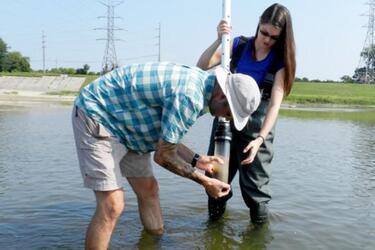Nitrogen Dynamics
Dr. Silvia Newell's research is featured in the Environmental Monitor
February 3, 2016

February 3, 2016
October 2015, Earth and Environmental Science Assistant Professor Silvia Newell, Ph.D., met with the Environmental Monitor regarding her labortory studies on the chemical relationships found in marine environments. Currently her work focuses on hypereutorphic Lake Taihu in China, Lake Erie, and Ohio waterways. These environments are extreme nutrient-rich with frequent algal blooms and low transparency. "When you look at the state as a whole, the majority of nutrients that are being added through runoff are coming from farms," said Newell. "And wastewater treatment plants are a smaller
Finding the right college means finding the right fit. See all that the College of Science and Math has to offer by visiting campus.